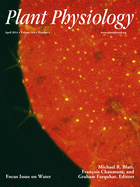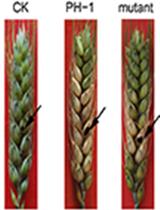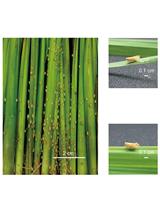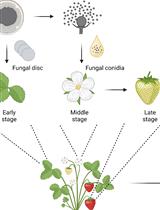- EN - English
- CN - 中文
Pea Aphid Survival Assays on Arabidopsis thaliana
拟南芥的豌豆蚜存活实验
发布: 2014年10月05日第4卷第19期 DOI: 10.21769/BioProtoc.1251 浏览次数: 9947
评审: Tie LiuAnonymous reviewer(s)
Abstract
Aphids are phloem-feeding insects that successfully colonize specific host plant species. Aphid performance on a given plant is commonly measured by assessing fecundity of an aphid species that is adapted to the host. However, this approach may not reveal roles for plant genes in defense pathways that adapted aphids suppress. The host range of the pea aphid (Acyrthosiphon pisum) is mostly restricted to plants of the legume family, and does not include Arabidopsis (Arabidopsis thaliana). Pea aphids die within a few days of being placed on Arabidopsis plants, and their survival therefore provides a sensitive measure of the status of the host plant defenses. This protocol describes how to measure the survival rate of the pea aphid on the non-host plant Arabidopsis. The protocol consists of two phases: first, obtaining a population of pea aphids of synchronized age; and secondly measuring their survival on Arabidopsis plants.
Materials and Reagents
- 3 to 4-week-old Vicia faba plants grown in 14 h light (18 °C)/10 h dark (15 °C)
- 7-week-old Arabidopsis plants grown in a short day condition (10 h light/14 h dark (22 °C)
- Pea Aphids (Acyrthosiphon pisum) maintained on Vicia faba plants grown in 14 h light (18 °C)/10 h dark (15 °C)
Equipment
- Plant growth facilities
- Insect-proof cage to contain Vicia faba plants (Note 1)
- Petri dish
- Moist artist’s paintbrush (size 2 or 4)
- Clip cages (Figure 1)
- Plant labels
- Marker pen
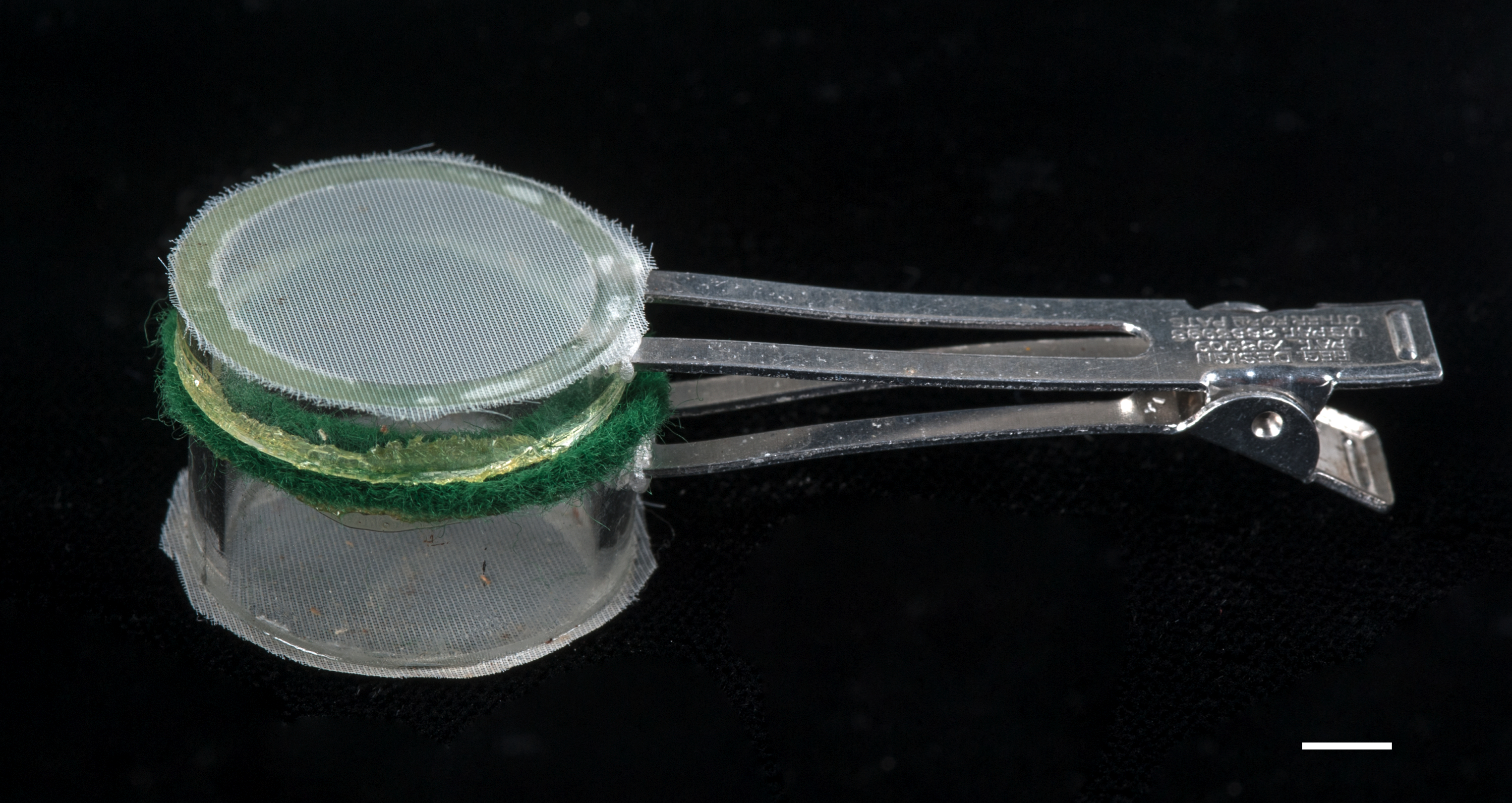
Figure 1. Clip cage. Composed of a metal double prong hair clip (50 mm long), two pieces of plastic tube (10 and 5 mm high, 2 mm thick, 25 mm diameter), two circles of felt (25 mm diameter, 4 mm across, 1 mm thick), and two pieces of fine gauze (25 mm diameter). The hair clip is heated and pushed into the plastic tubes. The felt and gauze are attached with superglue. Scale bar = 5 mm
Software
- Microsoft® Excel
Procedure
文章信息
版权信息
© 2014 The Authors; exclusive licensee Bio-protocol LLC.
如何引用
Readers should cite both the Bio-protocol article and the original research article where this protocol was used:
- Prince, D. C., Mugford, S. T., Vincent, T. R. and Hogenhout, S. A. (2014). Pea Aphid Survival Assays on Arabidopsis thaliana. Bio-protocol 4(19): e1251. DOI: 10.21769/BioProtoc.1251.
- Prince, D. C., Drurey, C., Zipfel, C. and Hogenhout, S. A. (2014). The leucine-rich repeat receptor-like kinase BRASSINOSTEROID INSENSITIVE1-ASSOCIATED KINASE1 and the cytochrome P450 PHYTOALEXIN DEFICIENT3 contribute to innate immunity to aphids in Arabidopsis. Plant Physiol 164(4): 2207-2219.
分类
植物科学 > 植物免疫 > 病害生物测定
您对这篇实验方法有问题吗?
在此处发布您的问题,我们将邀请本文作者来回答。同时,我们会将您的问题发布到Bio-protocol Exchange,以便寻求社区成员的帮助。
提问指南
+ 问题描述
写下详细的问题描述,包括所有有助于他人回答您问题的信息(例如实验过程、条件和相关图像等)。
Share
Bluesky
X
Copy link


